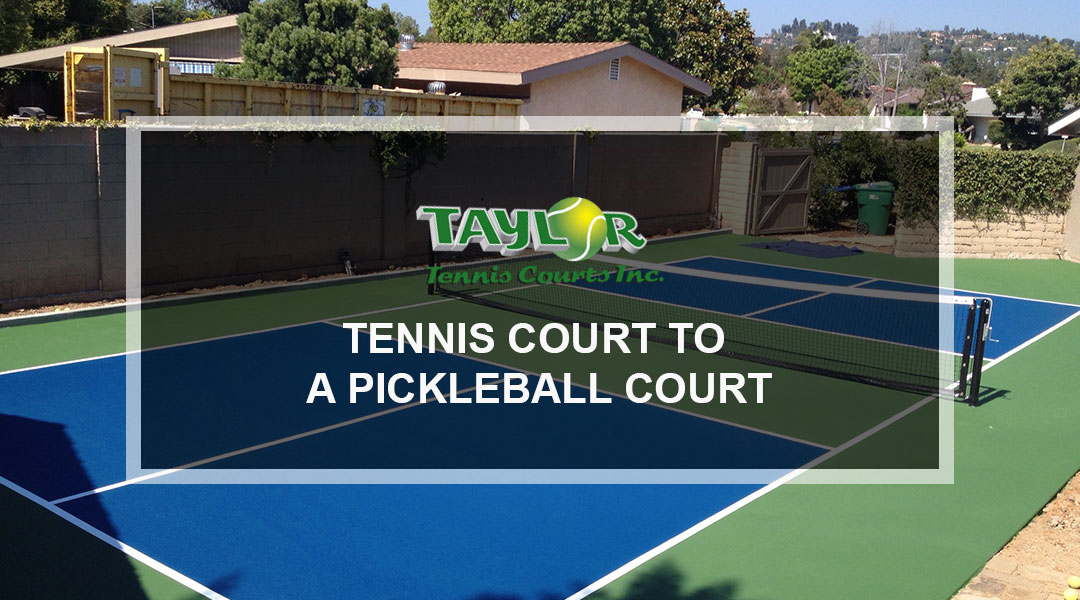Pickleball Court Construction-- Expert Setup for Your Dream Court
Wiki Article
Lasting Practices in Pickleball Court Construction You Ought To Know
As the appeal of pickleball remains to climb, so too does the requirement for lasting methods in court building and construction. This technique not only addresses ecological worries but also boosts the durability and capability of the courts. From picking eco-friendly products to implementing effective drain and energy-saving lights services, there are countless methods to consider. Yet, the impact of these techniques prolongs far beyond the court itself. Comprehending just how each component adds to a much more sustainable future welcomes further expedition into the detailed equilibrium between entertainment growth and environmental stewardship.Choosing Eco-Friendly Materials
Picking eco-friendly products is an essential step in the building of lasting pickleball courts. The option of sustainable products not only minimizes ecological influence yet likewise boosts the long life and efficiency of the court. Key products include reused rubber for the surface area, which offers superb resilience and shock absorption while diverting waste from land fills.Additionally, making use of in your area sourced materials minimizes transportation discharges and supports local economies. Pickleball court construction. Making use of indigenous hardwoods for fence and seating can give a lasting aesthetic while making sure durability against the components.
Integrating absorptive materials for court structures can even more add to sustainability by permitting all-natural water drainage and reducing runoff. These selections not just protect neighborhood communities however likewise advertise much healthier play atmospheres.
Efficient Water Drainage Solutions
While the choice of environment-friendly products is vital, executing efficient drain solutions is equally important for maintaining sustainable pickleball courts. Correct drain not only safeguards the court surface from water damages however additionally decreases erosion and runoff, advertising ecological stability.Efficient water drainage systems can consist of absorptive paving, which enables water to penetrate the ground instead than merging externally. This minimizes the likelihood of standing water, which can bring about mold and other maintenance problems. Additionally, integrating purposefully positioned drainage channels and swales can guide excess water far from the court location, making sure a completely dry playing surface area and stopping dirt erosion.
Utilizing indigenous greenery in the landscaping around the courts can better improve drainage by taking in excess water and reducing drainage. These plants require less irrigation and promote biodiversity, lining up with sustainable methods.
Moreover, it is crucial to routinely maintain the drainage system to guarantee its lasting efficiency. This includes cleaning particles and tracking for clogs. By prioritizing efficient drainage options, pickleball court contractors can significantly add to the sustainability and longevity of the center, inevitably benefiting both gamers and the atmosphere.
Energy-Efficient Illumination Options
As the demand for pickleball proceeds to grow, incorporating energy-efficient lighting options into court style has actually ended up being increasingly essential for sustainability. Typical illumination systems typically take in too much energy, adding to higher functional costs and ecological effect. Consequently, adopting contemporary, energy-efficient innovations is necessary for both new buildings and remodellings.LED (Light Emitting Diode) lights stands out as a premier selection due to its long life and energy cost savings (Pickleball court construction). Contrasted to conventional illumination, LEDs make use of about 75% much less energy and can last as much as 25 times longer, dramatically minimizing maintenance expenses. Additionally, the directional nature of LED illumination decreases light contamination, making certain that lighting is focused on the court rather than bordering locations.

Sustainable Surface Alternatives
Discovering lasting surface area choices for pickleball courts has actually obtained grip among home builders and players alike. The focus on eco-friendly products not only straightens with the growing environmental recognition but also enhances the performance and durability of the courts.This product offers excellent shock absorption, minimizing the threat of injuries for players while advertising sustainability. These tiles are easy to change and mount, and their versatility allows for different court setups.
All-natural lawn courts are likewise becoming a lasting option, advertising biodiversity and decreasing the warm island result. They require normal maintenance and water, which might not line up with all sustainability goals.

Water Preservation Methods

Another effective strategy involves the installment of rain harvesting systems. These systems collect and save rainwater for usage in maintaining court surface areas and landscaping. This method not just saves safe and clean water but likewise reduces dependence on community sources.
Additionally, employing drought-resistant landscape design around the courts is vital. Indigenous plants call for less water and are much better adapted to regional environment problems, thus reducing total water consumption. Furthermore, making use of efficient watering systems, such as drip irrigation, makes sure that water is supplied straight to plant origins, decreasing evaporation and waste.
Verdict
Including sustainable practices in pickleball court building and construction dramatically adds to ecological preservation and resource performance. Making use of eco-friendly products, applying reliable drain services, and embracing energy-efficient illumination options can significantly lower eco-friendly effect. Checking out lasting surface choices and employing water preservation methods boost the total sustainability of these recreational centers. By prioritizing these methods, the building and construction of pickleball courts can line up with more comprehensive environmental goals while advertising longevity and performance within areas.As the appeal of pickleball proceeds to increase, so as well does the demand for lasting techniques in court construction.Choosing environmentally friendly products is a crucial step in the construction of sustainable pickleball courts. By prioritizing energy-efficient lights options, pickleball court constructors can contribute to an extra sustainable future while fulfilling the requirements of stakeholders and players alike.Including lasting surface area options not only boosts the efficiency of pickleball courts but also leads the way for implementing effective water preservation methods.Incorporating sustainable techniques in pickleball court building significantly adds to environmental conservation and source efficiency.
Report this wiki page